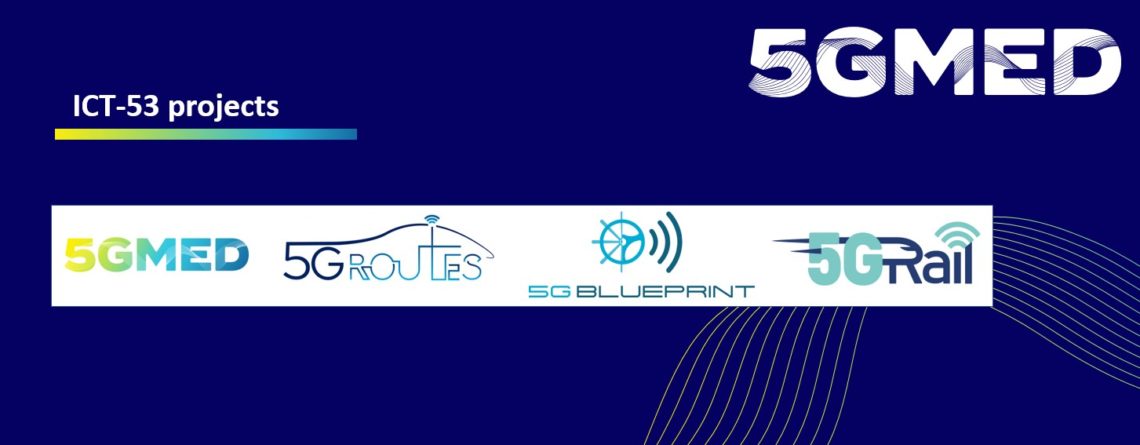ICT-53-2020: 5G / Connected & Automated Mobility (CAM)
5GMED is part of the ICT-53 projects whose objective is to validation of the latest available 5G specification in the context of innovative CAM applications under realistic conditions and seamlessly functioning across borders.

5G-Blueprint envisions to design and validate a technical architecture and a business and governance model for uninterrupted cross-border teleoperated transport based on 5G connectivity. The project’s outcome will be the blueprint for operational pan-European deployment of teleoperated transport solutions in the logistics sector and beyond.

5G-Routes aim is to validate through robust evidence the latest 5G features and 3GPP specifications (R.16 & R.17) of Connected and Automated Mobility (CAM) under realistic conditions. In particular, it will conduct advanced large-scale field trials of most representative CAM applications to demonstrate seamless functionality across a prominent 5G cross-border corridor (Via Baltica-North), traversing Latvia, Estonia and Finland.

5GRAIL objective is to validate the first set of FRMCS specifications (also called FRMCS V1) by developing and testing prototypes of the FRMCS ecosystem, for both trackside infrastructure and on-board. Regarding on-board, 5GRAIL aims to reduce specific equipment costs and installation engineering time by combining all train-to-ground communications by enabling a modular on-board setup based on standardised interfaces and including mainstream 5G components, called TOBA (Telecom On-Board Architecture), in alignment with the sector’s technical vision.


